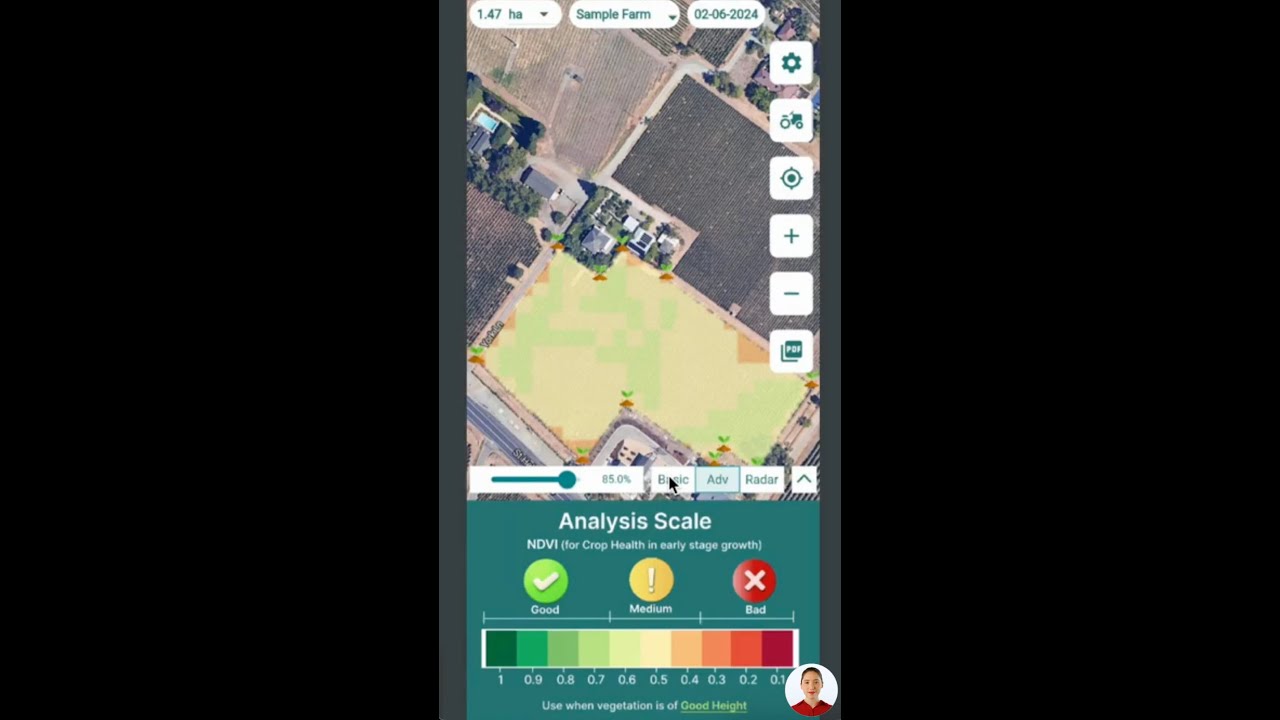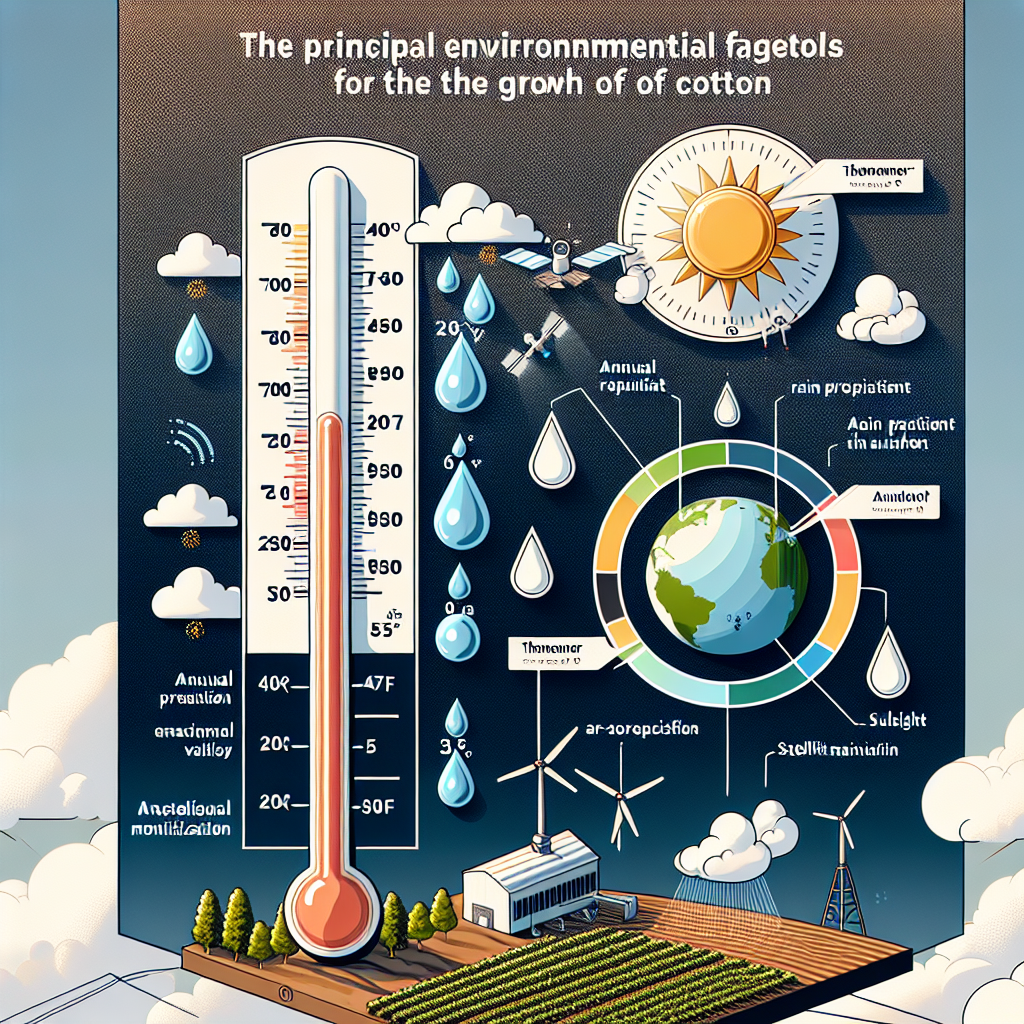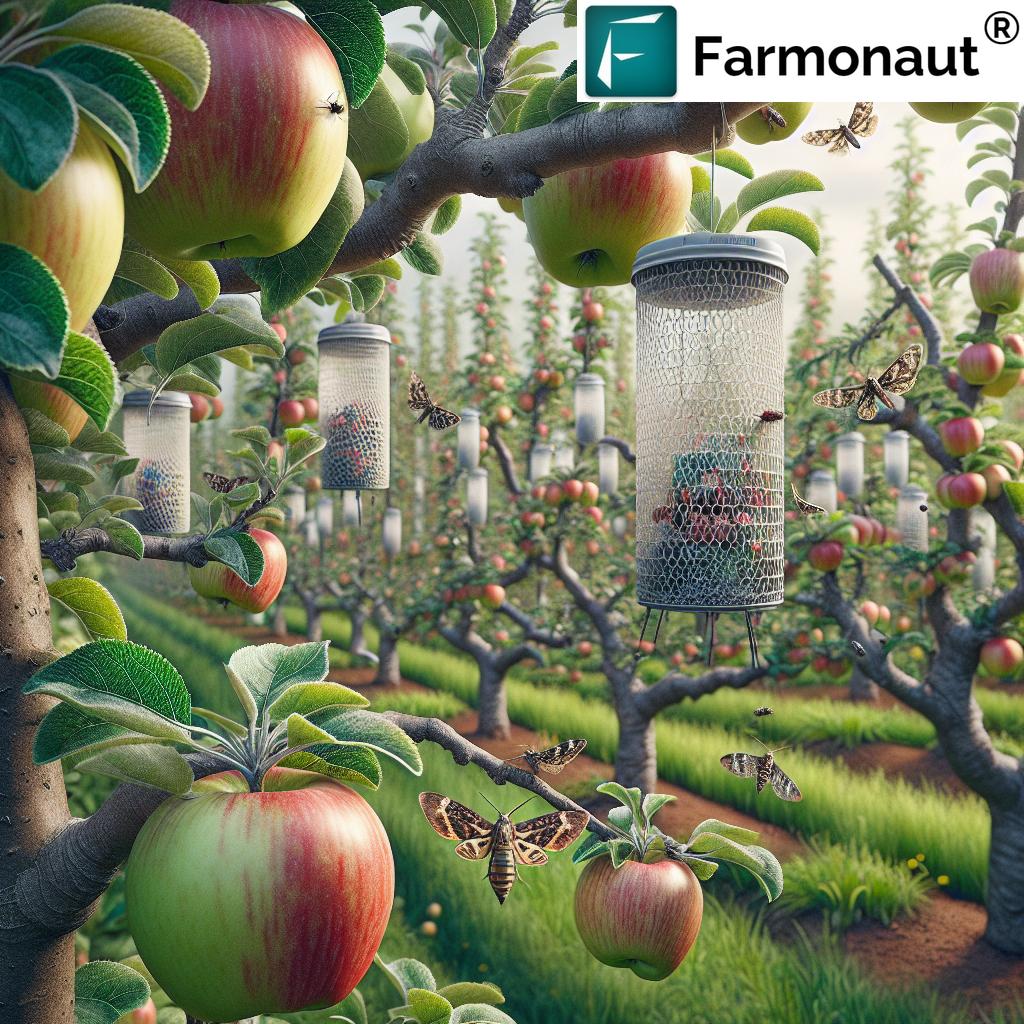Breaking News: New Barley Yellow Mosaic Virus Strain Threatens Winter Crops – Farmonaut’s Guide to Agricultural Disease Control
“New Barley Yellow Mosaic Virus strains can reduce winter barley yields by up to 50% in severely affected fields.”
In the ever-evolving landscape of agriculture, we find ourselves facing a new challenge that threatens the stability of our winter barley crops. The emergence of a new strain of the Barley Yellow Mosaic Virus (BaYMV) has sent shockwaves through the farming community, prompting urgent calls for enhanced agricultural disease control measures. As representatives of Farmonaut, we’re committed to providing you with the most up-to-date information and innovative solutions to combat this growing threat.
Understanding the Barley Yellow Mosaic Virus
The Barley Yellow Mosaic Virus, commonly known as BaYMV, is a persistent soil-borne virus that has long been a thorn in the side of barley farmers worldwide. This virus, belonging to the genus Bymovirus, is transmitted by the soil-borne plasmodiophorid Polymyxa graminis, making it particularly challenging to eradicate once established in a field.
The recent discovery of a new BaYMV strain has raised concerns among farmers, agricultural scientists, and industry experts alike. This new variant has demonstrated an alarming ability to overcome the resistance of many previously resilient barley varieties, posing a significant threat to winter barley crops in particular.

The Impact on Winter Barley and Beyond
Winter barley, a crucial crop for many farmers, is particularly vulnerable to this new BaYMV strain. The virus’s ability to persist in soil for extended periods makes it a long-term threat to arable farming systems. As the virus spreads, it not only affects barley but also poses risks to other cereals, potentially disrupting entire crop rotations and farming strategies.
- Reduced crop yields: Infected plants typically show stunted growth and reduced tillering, leading to significant yield losses.
- Quality degradation: The virus can affect grain quality, potentially impacting its suitability for various end-uses, including malting and animal feed.
- Economic implications: The combination of reduced yields and quality can have severe economic consequences for farmers and the broader agricultural industry.
To combat this evolving threat, we at Farmonaut are leveraging our advanced satellite-based farm management solutions to assist farmers in early detection and management of BaYMV infections.
Symptoms and Identification
Recognizing the symptoms of BaYMV infection is crucial for early intervention. The virus typically manifests in the following ways:
- Yellow or pale green streaks on leaves, often in a mosaic pattern
- Stunted plant growth and reduced tillering
- Leaf chlorosis, particularly noticeable in early spring
- Reduced winter hardiness, making plants more susceptible to frost damage
It’s important to note that symptoms can vary depending on the barley variety, environmental conditions, and the specific virus strain. Our Farmonaut platform utilizes advanced satellite imagery to detect early signs of crop stress, potentially indicating virus infection before visible symptoms appear.
The Role of Weather in Disease Progression
Weather conditions play a significant role in the development and spread of BaYMV. Understanding these factors is crucial for effective disease management:
- Temperature: The virus thrives in cool conditions, with optimal temperatures for infection ranging from 10-15°C (50-59°F).
- Moisture: Wet soil conditions favor the movement and infection of the virus-carrying Polymyxa graminis.
- Seasonal patterns: Autumn-sown crops are particularly at risk, as cool, moist conditions often prevail during early growth stages.
Farmonaut’s platform integrates real-time weather data with crop health monitoring, allowing farmers to anticipate potential infection periods and take preventive measures.
Explore Farmonaut’s API for advanced weather and crop data integration
Resistant Barley Varieties: A Key Defense
One of the primary strategies in combating BaYMV has been the development and use of resistant barley varieties. However, the emergence of new virus strains has complicated this approach:
- Traditional resistance genes: Varieties carrying the rym4 and rym5 resistance genes have been widely used to control BaYMV.
- Evolving threat: The new strain has shown the ability to overcome rym5 resistance, highlighting the need for ongoing variety development.
- Multi-gene resistance: Researchers are now focusing on developing varieties with multiple resistance genes to provide more durable protection.
Farmonaut’s platform can assist in variety selection by providing detailed field-level data on crop performance, helping farmers make informed decisions about which varieties to plant based on local conditions and disease pressure.
“Soil-borne viruses like BaYMV can persist in agricultural soils for over 10 years, posing long-term threats to crop production.”
Innovative Management Strategies
Combating the new BaYMV strain requires an integrated approach that combines traditional farming practices with cutting-edge technology:
- Precision Agriculture Techniques:
- Satellite-based crop monitoring for early detection of stress patterns
- Variable rate application of inputs to optimize plant health and resistance
- GPS-guided machinery to minimize soil disturbance and reduce virus spread
- Soil Health Management:
- Implement crop rotations to break the virus cycle
- Use of cover crops to improve soil structure and microbial diversity
- Regular soil testing to maintain optimal pH and nutrient levels
- Cultural Practices:
- Adjust planting dates to avoid peak infection periods
- Manage volunteer cereals and grassy weeds that can act as virus reservoirs
- Implement field hygiene practices to prevent soil movement between fields
Farmonaut’s platform integrates these strategies by providing farmers with actionable insights based on real-time field data, enabling more effective and timely management decisions.
The Power of Data in Disease Control
In the fight against BaYMV and other agricultural diseases, data is our most powerful weapon. Farmonaut’s advanced satellite-based farm management solutions provide farmers with unprecedented access to critical information:
- Real-time crop health monitoring using multispectral satellite imagery
- AI-driven analysis to detect early signs of disease stress
- Integration of weather data, soil information, and crop performance metrics
- Customized alerts and management recommendations
By leveraging these tools, farmers can make proactive decisions to protect their crops and optimize yields, even in the face of challenging disease pressures.
Access Farmonaut’s API Developer Docs for in-depth integration options
Sustainable Farming Practices in Disease Management
As we confront the challenges posed by the new BaYMV strain, it’s crucial to consider the long-term sustainability of our farming practices. Sustainable approaches not only help manage current disease threats but also build resilience against future challenges:
- Biodiversity enhancement: Increasing crop and genetic diversity within farming systems can help reduce disease pressure and improve overall ecosystem health.
- Reduced chemical inputs: By leveraging precision agriculture techniques, farmers can optimize the use of pesticides and fertilizers, minimizing environmental impact while maintaining crop health.
- Conservation tillage: Minimizing soil disturbance can help preserve beneficial soil microorganisms that may compete with or suppress pathogens like Polymyxa graminis.
- Water management: Efficient irrigation practices can help create less favorable conditions for virus transmission while conserving water resources.
Farmonaut’s platform supports these sustainable practices by providing detailed insights into field conditions, enabling farmers to make more informed and environmentally conscious decisions.

Economic Implications and Risk Management
The emergence of the new BaYMV strain has significant economic implications for farmers and the broader agricultural industry. Understanding and managing these risks is crucial for maintaining farm viability:
- Yield impact: Severe infections can lead to yield losses of up to 50%, significantly affecting farm income.
- Quality concerns: Reduced grain quality can impact market prices and end-use suitability, particularly for malting barley.
- Input costs: Managing the disease may require additional investments in resistant varieties, soil treatments, or precision agriculture tools.
- Long-term planning: The persistence of the virus in soil necessitates long-term crop rotation and land management strategies.
Farmonaut’s platform can assist in economic risk management by providing:
- Yield prediction models based on current crop health and historical data
- Cost-benefit analysis tools for different management strategies
- Integration with market data to help farmers make informed marketing decisions
Collaboration and Knowledge Sharing
Addressing the challenges posed by the new BaYMV strain requires a collaborative effort across the agricultural community. Farmonaut is committed to fostering this collaboration through:
- Data sharing initiatives that allow farmers to benchmark their performance against regional averages
- Integration with research institutions to incorporate the latest scientific findings into our management recommendations
- Community forums and webinars to facilitate knowledge exchange among farmers, agronomists, and researchers
- Partnerships with agricultural extension services to provide localized support and training
By working together and leveraging collective knowledge and experience, we can develop more effective strategies to combat BaYMV and other emerging agricultural threats.
Future Outlook and Research Directions
As we continue to grapple with the challenges posed by BaYMV and its new strain, ongoing research and development are crucial. Key areas of focus include:
- Genetic research: Developing new barley varieties with improved and durable resistance to multiple BaYMV strains.
- Biocontrol methods: Investigating potential biological control agents that could suppress the virus or its vector.
- Advanced diagnostics: Improving rapid, field-based testing methods for early and accurate virus detection.
- Climate change impacts: Understanding how changing climate patterns may affect virus distribution and severity.
- Integrated management strategies: Developing holistic approaches that combine genetic resistance, cultural practices, and precision agriculture techniques.
Farmonaut is committed to staying at the forefront of these developments, continuously updating our platform to incorporate the latest research findings and technological advancements.
Comparison of BaYMV Strains and Management Strategies
| BaYMV Strain | Affected Barley Varieties | Symptoms | Management Strategies |
|---|---|---|---|
| Traditional BaYMV | Susceptible varieties lacking rym4 or rym5 genes | Yellow mosaic patterns, stunted growth | Resistant varieties, crop rotation |
| BaYMV-2 | Varieties with rym4 resistance | Similar to traditional strain, may be less severe | Varieties with rym5 resistance, cultural practices |
| New Strain (rym5-breaking) | Varieties with rym5 resistance | More severe mosaic, increased yield loss | Multi-gene resistant varieties, integrated management |
| BaYMV-IM | Some rym4 and rym5 resistant varieties | Variable symptoms, potential for severe impact | Ongoing research for new resistance genes, precision agriculture |
Conclusion: A Call to Action
The emergence of the new Barley Yellow Mosaic Virus strain represents a significant challenge to the agricultural community, particularly for winter barley farmers. However, with the right tools, knowledge, and collaborative approach, we can effectively manage this threat and protect our crops.
Farmonaut stands ready to support farmers in this endeavor with our cutting-edge satellite-based farm management solutions. By leveraging the power of data, precision agriculture, and sustainable farming practices, we can build a more resilient and productive agricultural system.
We encourage all farmers, agronomists, and agricultural stakeholders to stay informed about the latest developments in BaYMV research and management strategies. Together, we can overcome this challenge and ensure the continued success of our farming communities.
FAQ Section
- Q: How does the new BaYMV strain differ from previous ones?
A: The new strain can overcome resistance in barley varieties with the rym5 gene, which were previously effective against other BaYMV strains. - Q: Can BaYMV affect crops other than barley?
A: While BaYMV primarily affects barley, it can impact other cereal crops to a lesser extent. It’s crucial to manage the virus to protect entire crop rotations. - Q: How long can BaYMV persist in soil?
A: BaYMV can persist in soil for over 10 years, making long-term management strategies essential. - Q: What role does Farmonaut play in managing BaYMV?
A: Farmonaut provides satellite-based crop monitoring, early stress detection, and data-driven insights to help farmers make informed decisions about disease management. - Q: Are there any chemical controls effective against BaYMV?
A: Currently, there are no direct chemical controls for BaYMV. Management focuses on resistant varieties, cultural practices, and precision agriculture techniques.




















